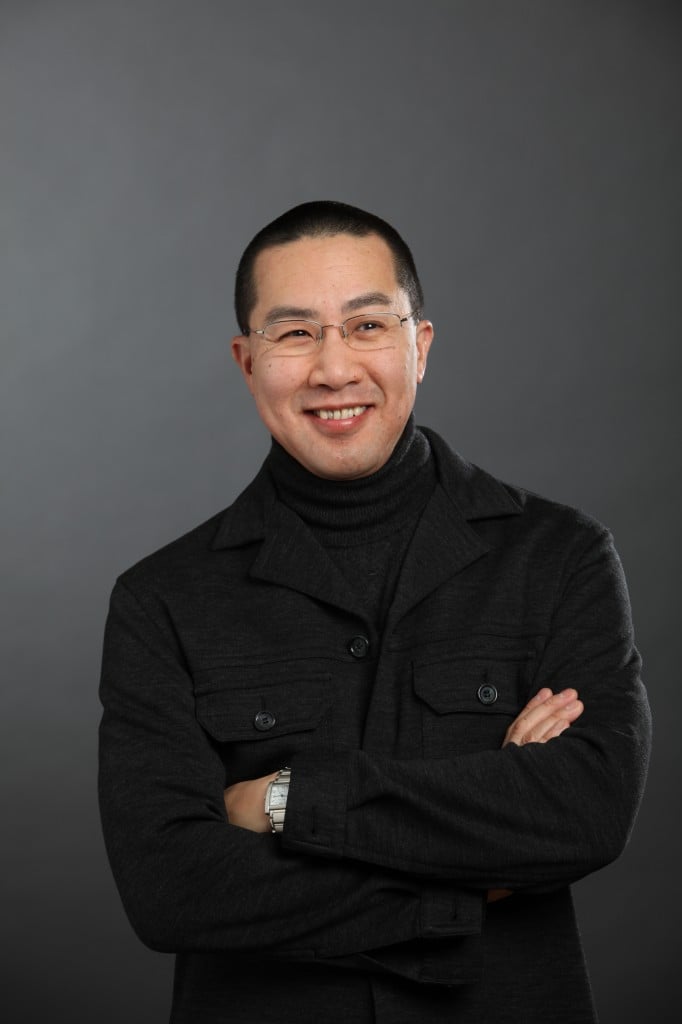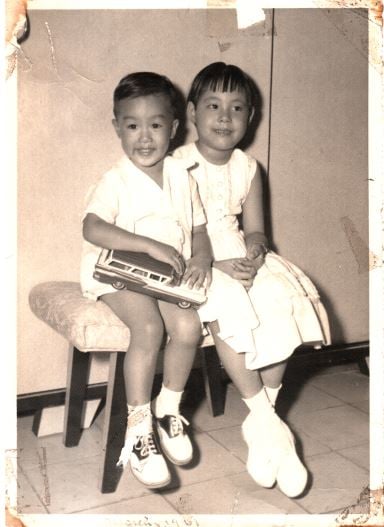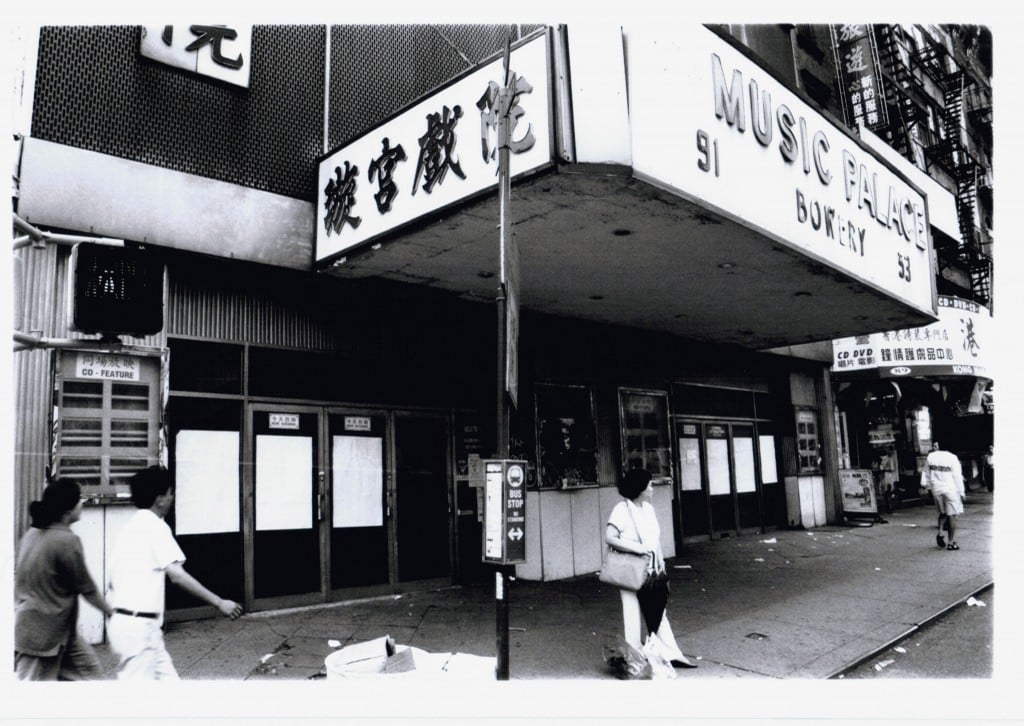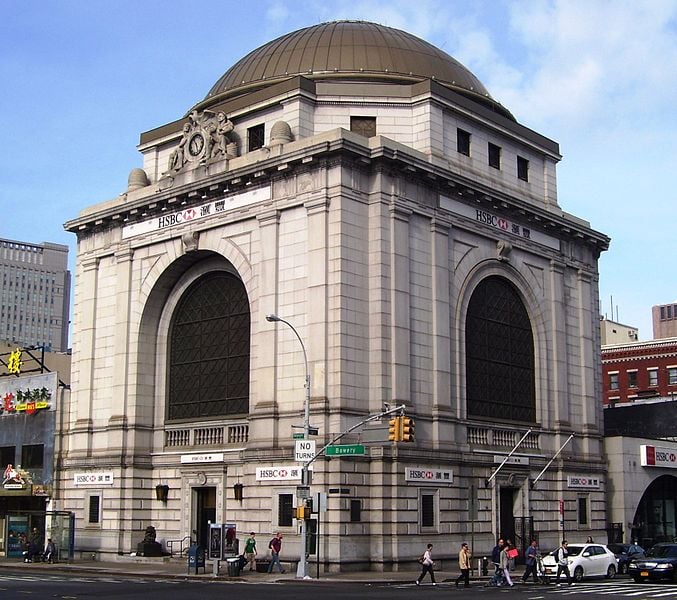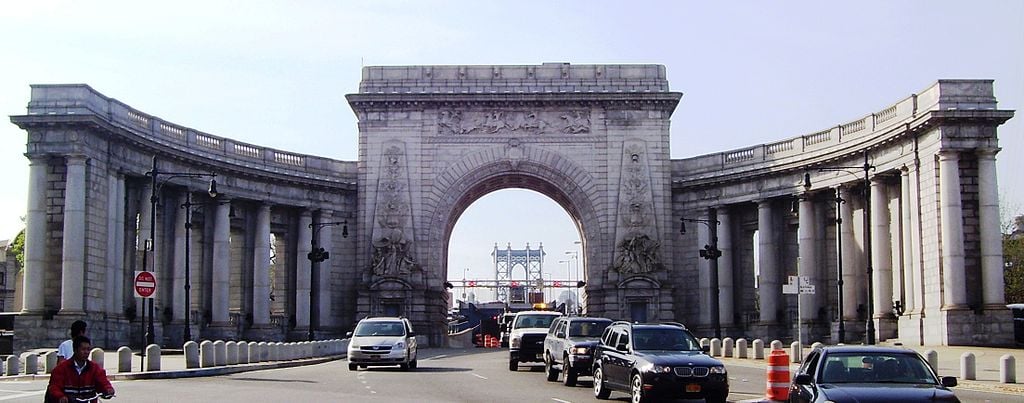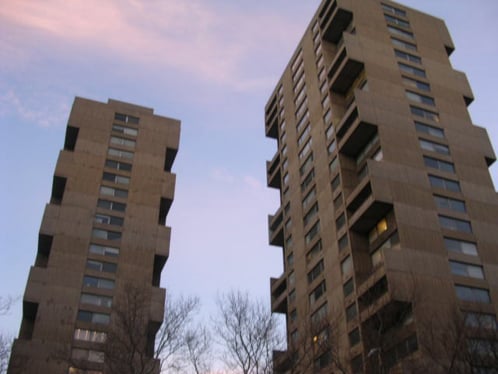Blog Archive
Staffers and Neighbors Part 3: David Eng
Staffers and Neighbors is a three part series about three Tenement Museum employees who have grown up on the Lower East Side. They each represent the stories that the Museum tells with our existing tours, and the stories that the Museum looks forward to telling in the future. Today we’re taking a walk around Chinatown with David Eng, Tenement Museum Vice President of Marketing and Communications and lifelong resident, to talk about some of the neighborhood landmarks from David’s childhood.
David Eng was born in Cuba to Chinese immigrants who met on the island, and he and his parents immigrated to the United States in 1961 with one suitcase in hand, after Fidel Castro’s revolution. The boat from Cuba dropped them off in Florida, where they then made their way to Washington DC where relatives lived, and finally, settled in New York City.
Our first stop was at the corner of Eldridge and Hester Streets, at what was once Junior High School 65. David attended the school for the 7th and 8th grades, but got in early to Brooklyn Technical High School for his 9th grade year to avoid going to the public high school in the area, which was known for gang activity. Both the junior and the high schools were on “the wrong side of Sara Roosevelt Park,” David explained, “Chrystie Street was the demarcation” between the good and bad sides of the neighborhood. But he attended the school “because it was the only junior high school in Chinatown.” After school, he remembers “running back across the park,” to his friends’ house, right on the other side of Sarah Roosevelt.
As we crossed the park, even on the snowy day, people enjoyed the sunshine or chatted with neighbors. “No one really hung out in the park when I was a kid, not like today,” David said, because of the drugs and gang activity that nearly consumed the park and the neighborhood.
Our next stop was the corner of Hester and Bowery. Where the Wyndam Garden hotel now stands was once the Music Palace Theater, one of the half dozen or so movie theaters in Chinatown that showed Hong Kong Chinese movies. David and his mother went to the movies every weekend to see the latest movie, often from the famed Shaw Brothers Hong Kong based studio, which churned out enough films to make sure that there would be a new feature film every week. If a film was really popular, it would play for two weeks. Often the movies would show double features, “kung fu movies, comedies, dramas… you could stay there all day.”
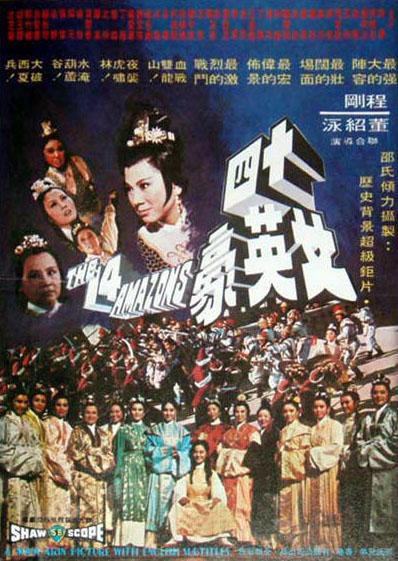
"The 14 Amazons," a 1972 Chinese language movie from The Shaw Brothers, a film studio based in Hong Kong.
We walked further down Bowery until we reached the corner of Canal, while David told me that residents of the neighborhood can get everything they need in a few block radius; “Healthcare, groceries, everything,” are available in the area and in Chinese. “It’s perfectly understandable how immigrants can live here their whole lives and not learn English.”
The Manhattan Savings Bank stands at the corner of Bowery and Canal. The bank is now an HSBC branch, but was an independent bank for years. David told me that the Chinese term for the bank translates literally to “The Chicken Dome Bank,” after the architectural detail on the signature dome atop the building, the rings of which resemble chicken veins.
Across the street from the bank is the entrance to the Manhattan Bridge – a grand, turn of the century behemoth of an arch and portico complete with classical sculptures. “These two always felt so alien, so grand, so old,” David told me. “The arch used to scare me as a kid. At night, all lit up, it looked like an entrance to a tomb.”
We walked further, past the building where David and his mother lived for a number of years, past the lot where Silver Palace, the largest restaurant in Chinatown once stood, to 11 Pell Street, which was a coffee shop where David’s father had his first job in the US. From there we walked to Doyers Street, a small crooked alley that gangs since the early 1900’s have used to avoid the cops due to a secret tunnel that leads under storefronts and out to Chatham Square. (The tunnel is since closed up. Yes, we did investigate.)
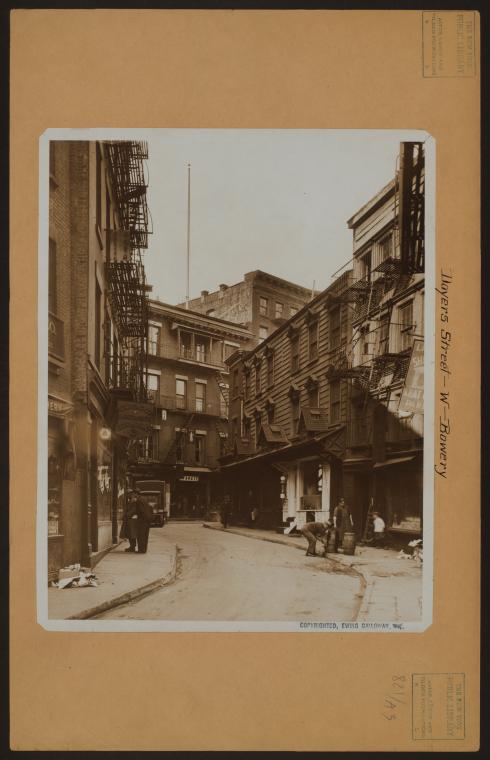
Doyers Street, one of the curvy alleys in Chinatown frequented by criminals looking to make a quick getaway, in 1928. Image courtesy of the New York Public Library.
We ended our tour at Chatham Square, what David called “the end of Chinatown.” Beyond Chatham Square was the beginning of the City Hall-Municipal district. Two tall buildings, Chatham Green and Chatham Towers, flank the street. “These are the two buildings I wanted to live in as a kid,” David told me. Both fascinated him; Chatham Green because of its balconies and S-shape, and Chatham Towers, because they looked “fancy.” Both of these buildings seemed so much grander than any of the smaller tenement buildings in the neighborhood.
Of course, there was one thing wrong with the brutalist, concrete structures of David’s dreams: “The ladies always asked, ‘Why aren’t they painted?'”
Thanks for walking around in the snow, David!
– Posted by Lib Tietjen
